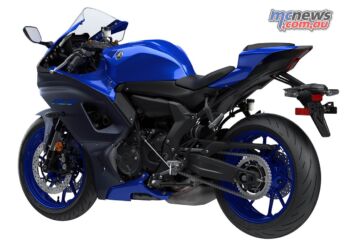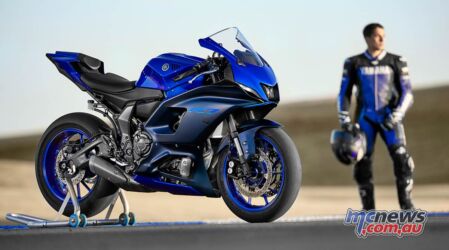2022 Yamaha YZF-R7 Review
Motorcycle Test by Rennie Scaysbrook
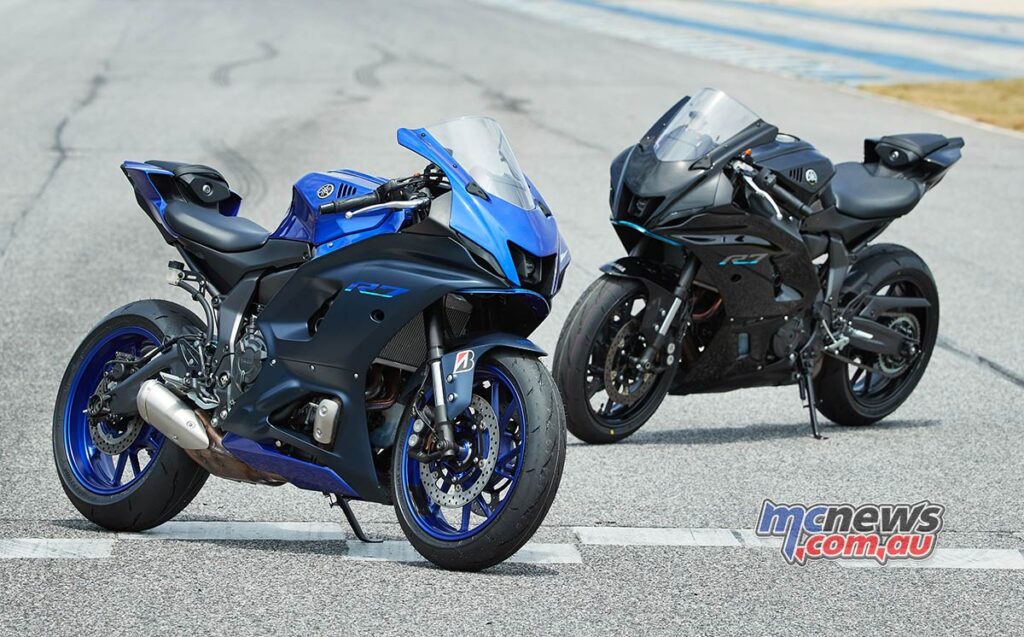
Let’s get one thing out of the way first: the new Yamaha YZF-R7 has absolutely nothing to do with the Yamaha YZF-R7. The Yamaha YZF-R7 OW02, I mean.
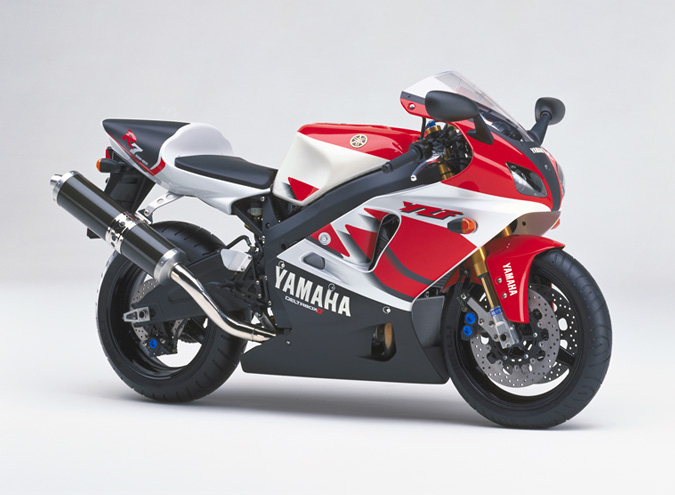
The original R7 (which in my mind should be the only R7) ran for a couple of years at the turn of the century and was so damn sexy and exclusive it is at the very top of bikes I’d like to own despite the fact it won nothing other than a few WorldSBK races. Yet the only thing this 2022 Yamaha YZF-R7 has in common with the OW02 is the name on the seat and the fact it’s made by the same company.
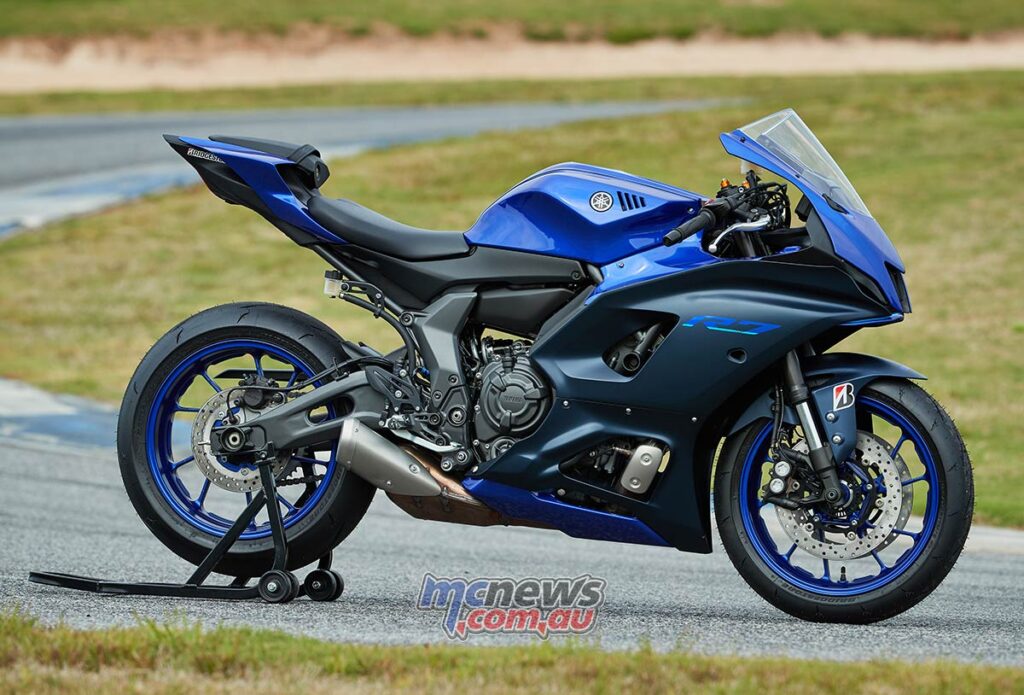
As a student of motorcycle history, I was rather pissed Yamaha called the ’22 R7 the name they did. I felt it was like Ferrari creating a Mazda MX-5 and calling it an F40. But history counts for little these days—it’s not going to bring in the dollars the board so dearly craves—and Yamaha told us the naming of the R7 came after several of the dreaded ‘focus group’ groups said naming a Yamaha sportsbike anything other than a YZF-R-something would be just too damn confusing. Poor souls.
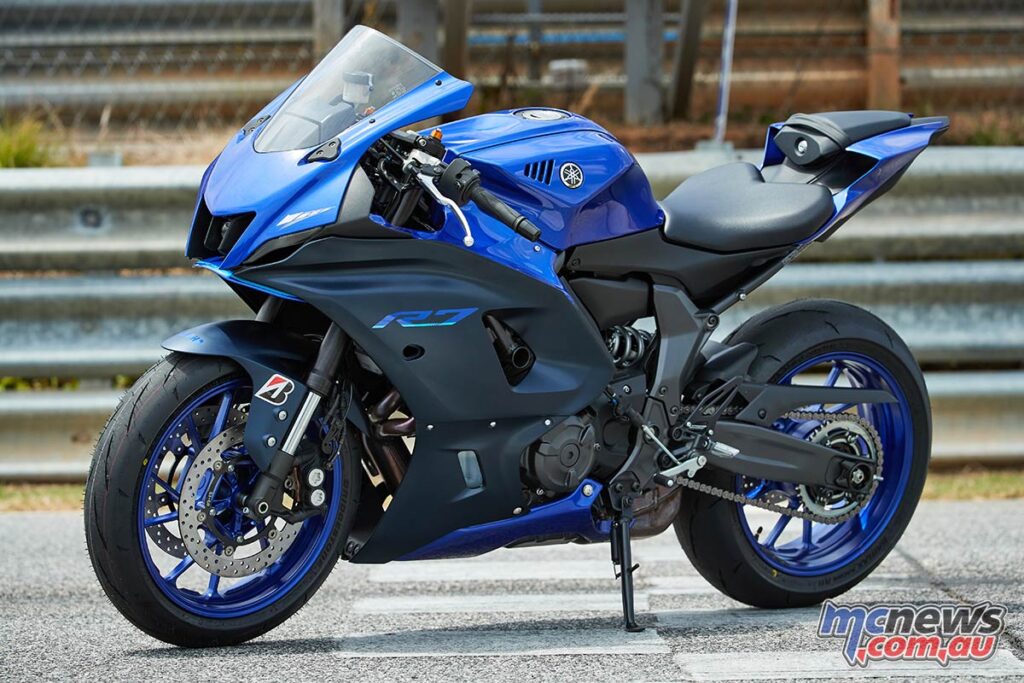
So now we have the 188kg ready-to-ride Yamaha YZF-R7, which comes hot on the heels of the production death of the bike that would smoke it in every conceivable performance test aside from a sub-2000 rpm torque run-to-the-pub in the YZF-R6. Confused? Yeah, me too. Bloody focus groups.
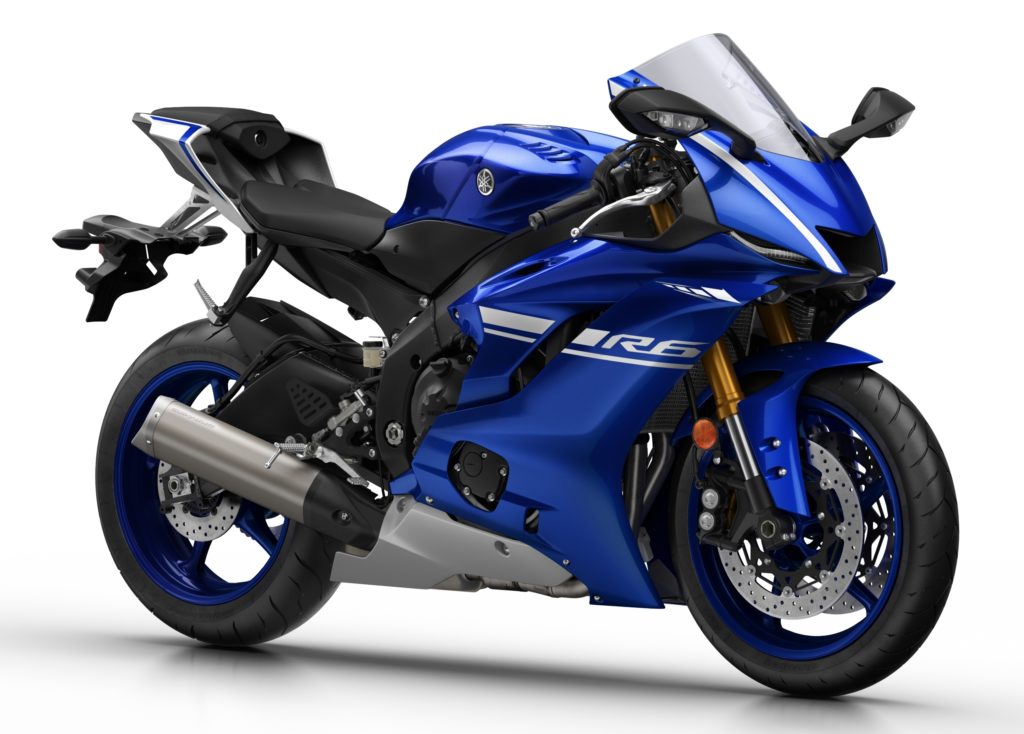
It’s called R7 because this is essentially an MT-07 in sporty garb. The Scaysbrooks are massive fans of the MT range, so much so that my mum, Sue, even bought one and has ridden more miles on it than I’ve done on press bikes in the past 12 months.

Under your crown jewels on the R7 sits the same 689 cc parallel twin-cylinder four-stroke CP2 motor mated to a six-speed gearbox and thankfully no adjustable engine maps. Yamaha doesn’t quote horsepower or torque but a rough guess of around 70 hp and 65 Nm would be close to what you can expect from the little twin.
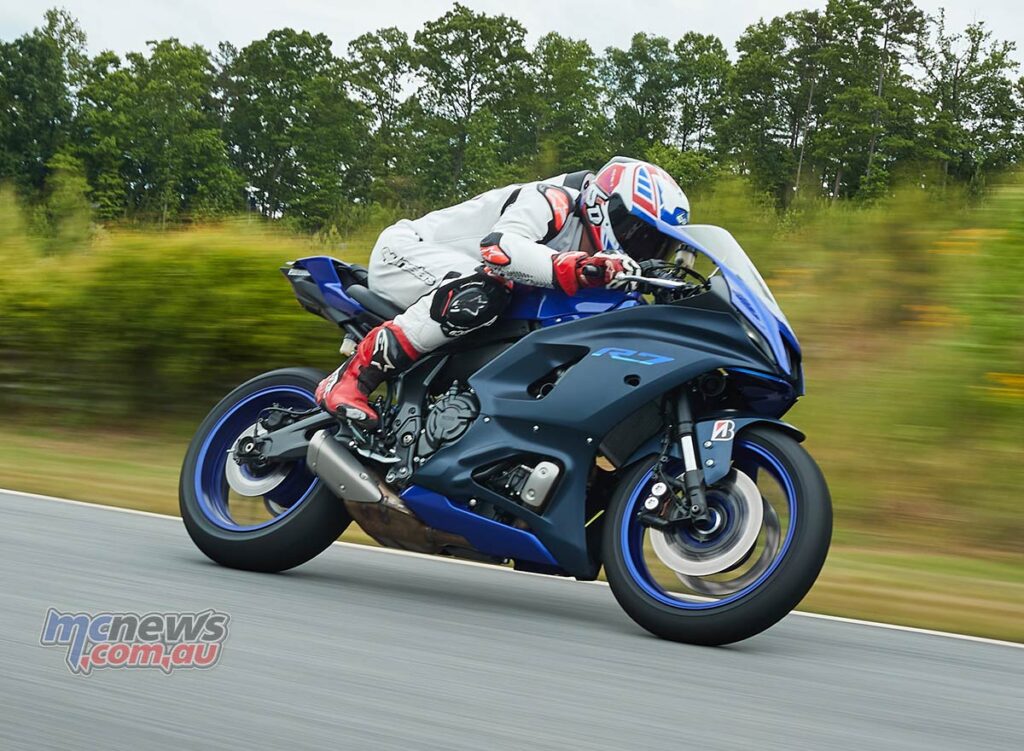
This is probably the most unintimidating motor currently on sale in full sportsbike attire—it picks up revs sedately and smoothly with very few vibrations, offering plenty of torque that continues until 8000-8500 rpm, at which point it tapers off significantly before hitting the 9500 rpm redline.
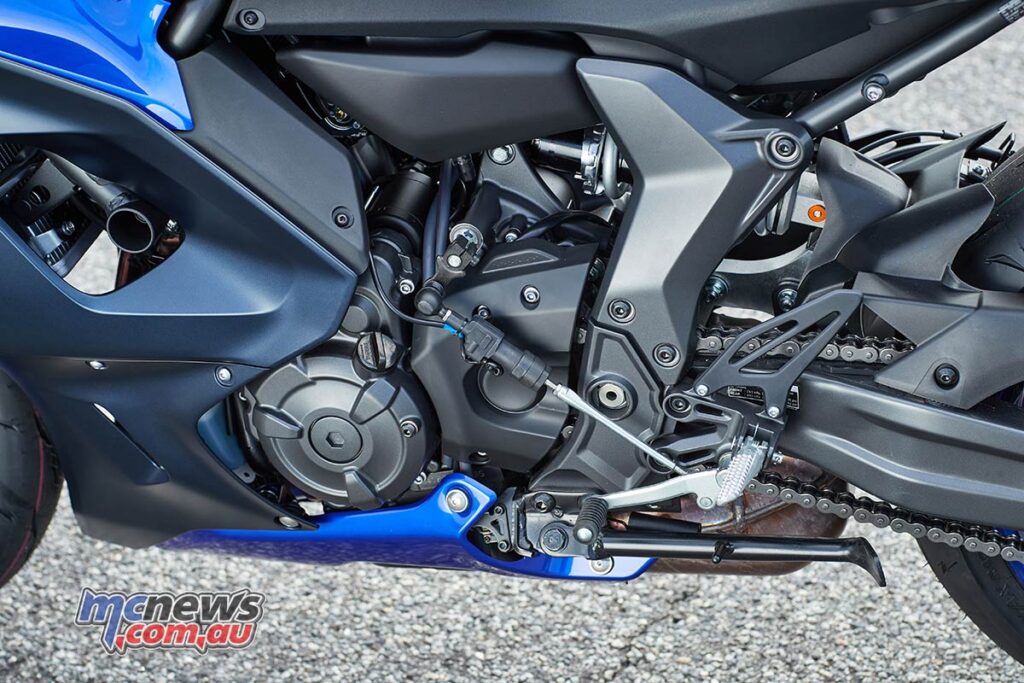
Yamaha absolutely smashed it when they bought out the CP2 motor back in 2014. It’s a bit like a modern version of the RD350, a motor that can have nuts ridden off it or cruised to the shops just as easily and always come back for more. In many ways, the CP2 makes for the perfect sportbike riding tutoring tool, an engine that any rider of any skill level can get on and enjoy without getting scared or bored by it.
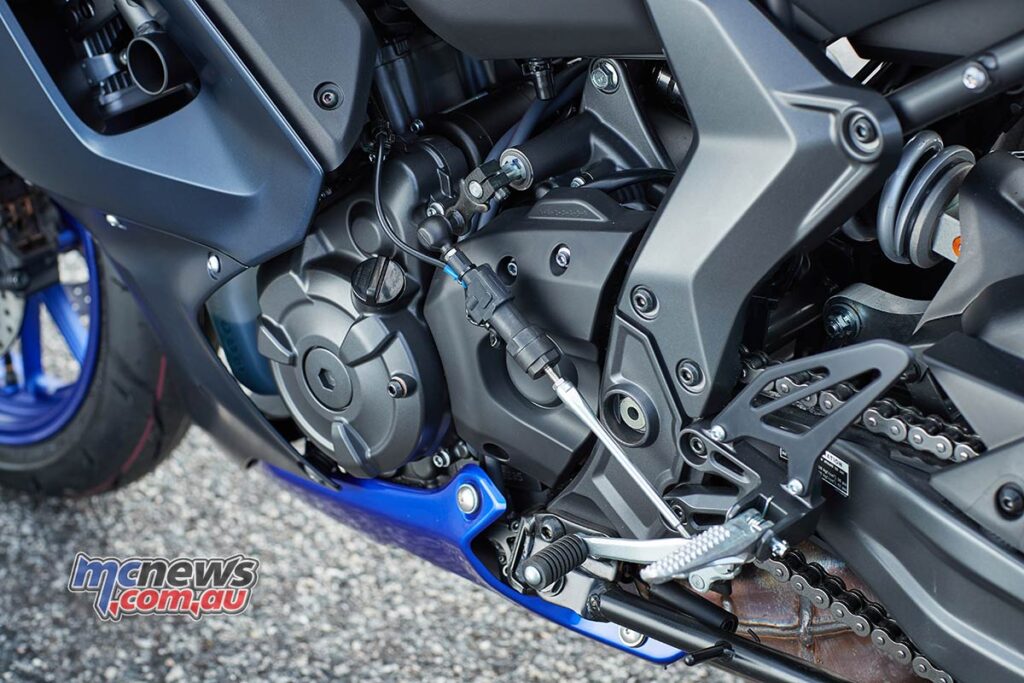
Our tes-tbike came fitted with the optional quick-shifter for clutchless up-shifts but you still need to go old school and match the revs on the down-shift. It was here some of the more budget aspects of the R7 shone through, as getting a smooth downshift when pushing hard on the track wasn’t always a given. You need to be very deliberate with your shifts when the revs are high, making sure the next cog has been selected before dumping the lever and relying on the slipper clutch (which the MT-07 missed out on) to keep everything from locking up and sending you sideways under brakes.
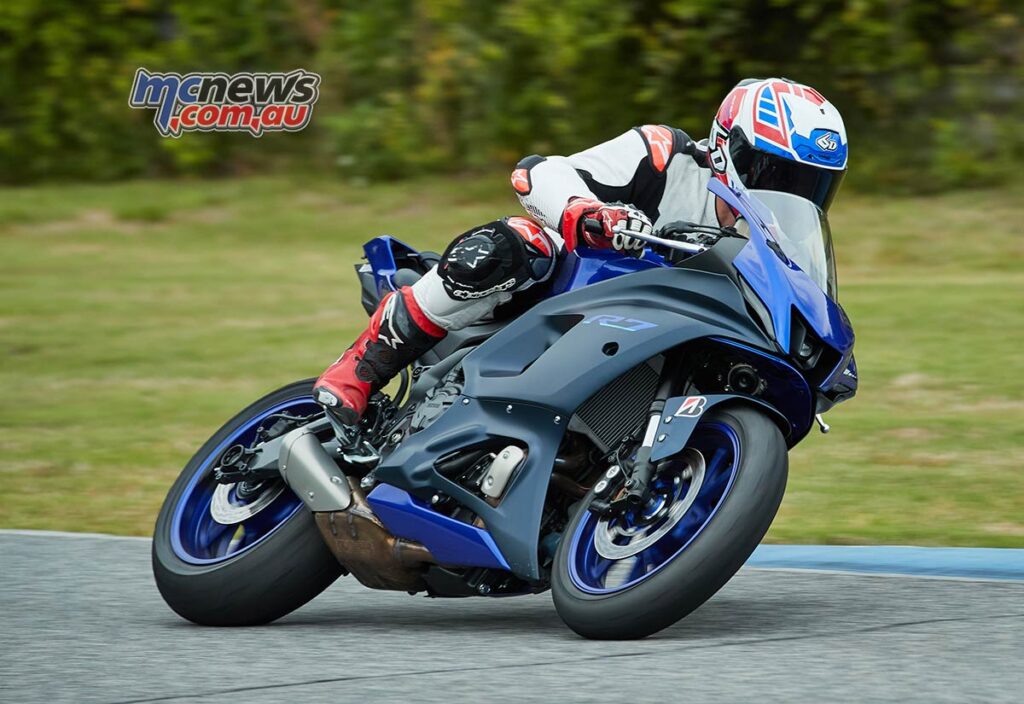
You’re graced with ADVICS four-piston monobloc front brakes matched to unswitchable ABS on the R7. Although braking power is reasonable enough, the ABS would kick in at a faster rate than I would have hoped when testing at the tight and twisty Atlanta Motorsports Park, and I’m still unsure if the pad material is quite right for pushing hard on the track.
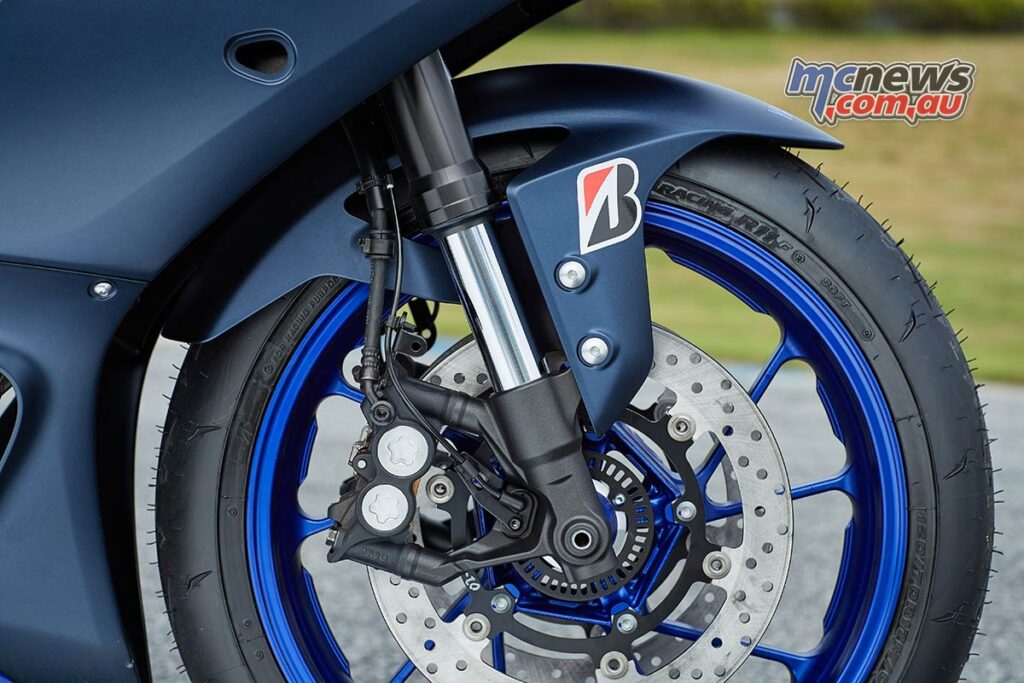
The brakes do the job of hauling you up from speed, but we have to be picky here, ladies and gentlemen, if I were taking this to the track the brakes would be the first thing I’d upgrade.

The R7 looks suspiciously like the R6 but that’s where the similarities and my comparisons with it will end. In fact, the R7 has more in common with an R3 than anything else. The top of the fairing where you tuck in behind is narrower than the R3, making it the most svelte machine in the Yamaha sportsbike line-up. I’ve got to give the styling department a golf clap—they did a fantastic job of making the R7 look like a racebike straight out of the crate with the LED lights hidden inside and either side of the intake. It makes the R7 look far racier than it really is, which is a nice little boon for the stylists.
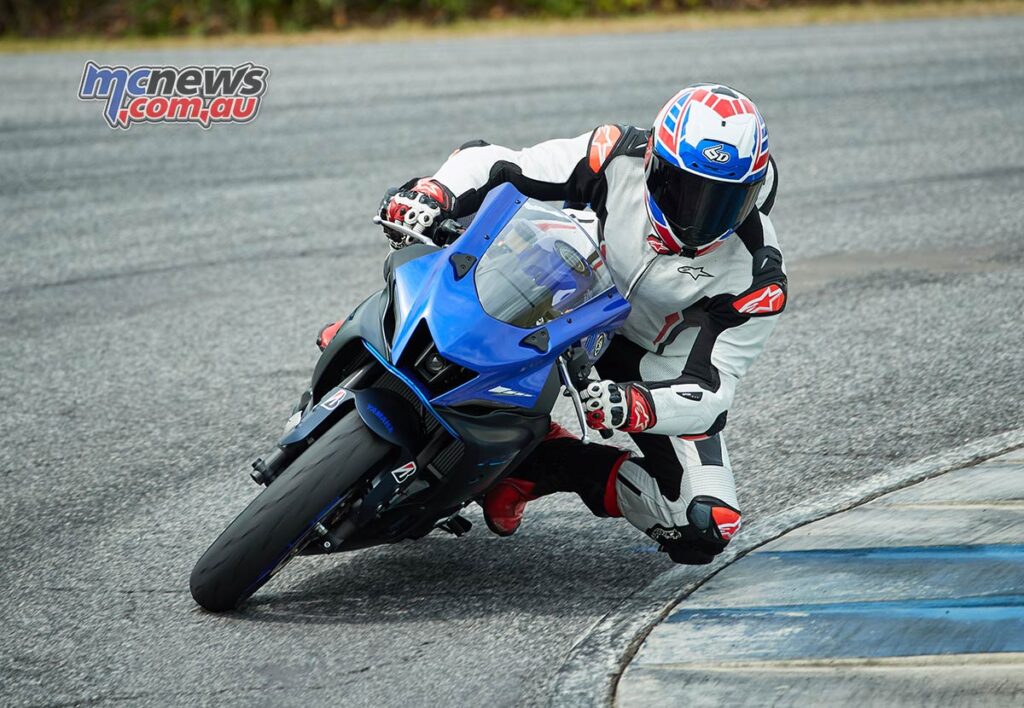
The bodywork wraps itself around the same MT-07 steel frame with a few mods like a 5 mm shorter wheelbase, 10 mm less ground clearance, 0.7° steeper steering geometry at 23.7° and 2 mm less trail. The swingarm is the same unit as on the MT, but the rear wheel sits a little further back thanks to a one-tooth smaller rear sprocket that makes the gearing a little taller for racetrack/sporty speeds. Coupled this with a different rear suspension linkage on the R7 and you’ve got a much better set-up ready for the track.
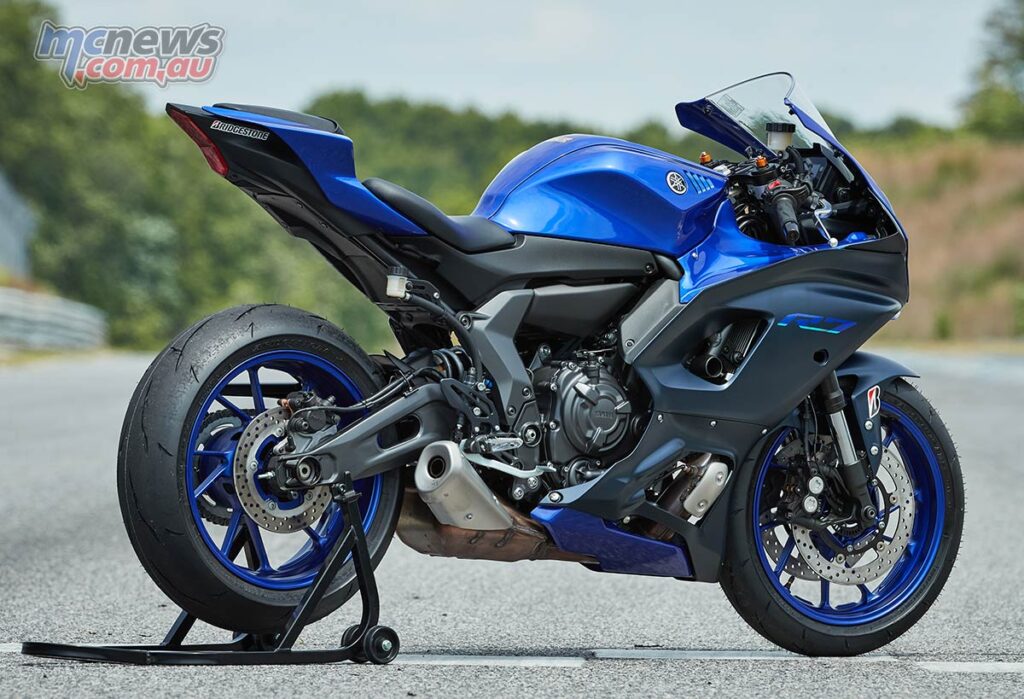
The suspension comes from KYB in the 41 mm fully-adjustable fork and a rear shock that’s pre-load and rebound damping adjustable. Again, it’s mid-level in terms of spec and handles the job of hustling around a racetrack admirably enough, but push the R7 really hard and you’ll start to get a bit of flex from the frame which transfers through the front end. Many of the guys who run modified MT-07’s in the MotoAmerica Twins Cup series have issues with the frame not being stiff enough for hard racetrack use, which is something understandable given the fact the frame comes straight off what is essentially a commuter bike that wasn’t designed to go racing in the first place.
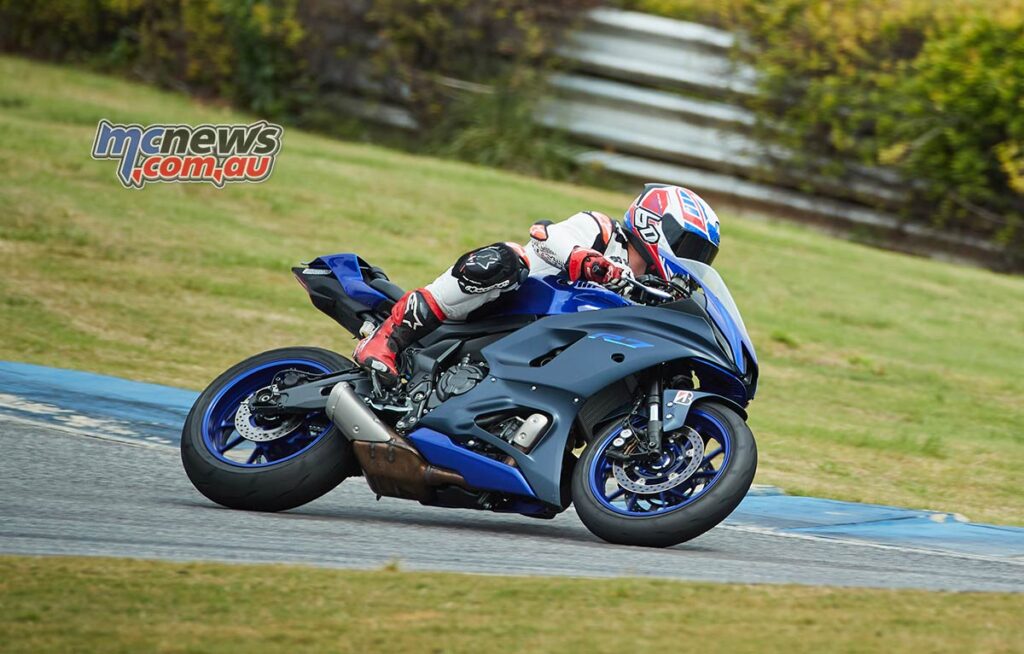
Be that as it may, the R7 is an incredibly nimble motorcycle. That slender CP2 motor and the fact the internals weigh bugger all and thus don’t have a lot of reciprocating mass means the R7 changes direction on a dime. With a relatively rangy wheelbase of 1395 mm, stability is never in doubt—the motor doesn’t really have the power to stress the chassis anyway, and you can wind the gas in super hard without the fear of the chassis kicking sideways and spitting you off.
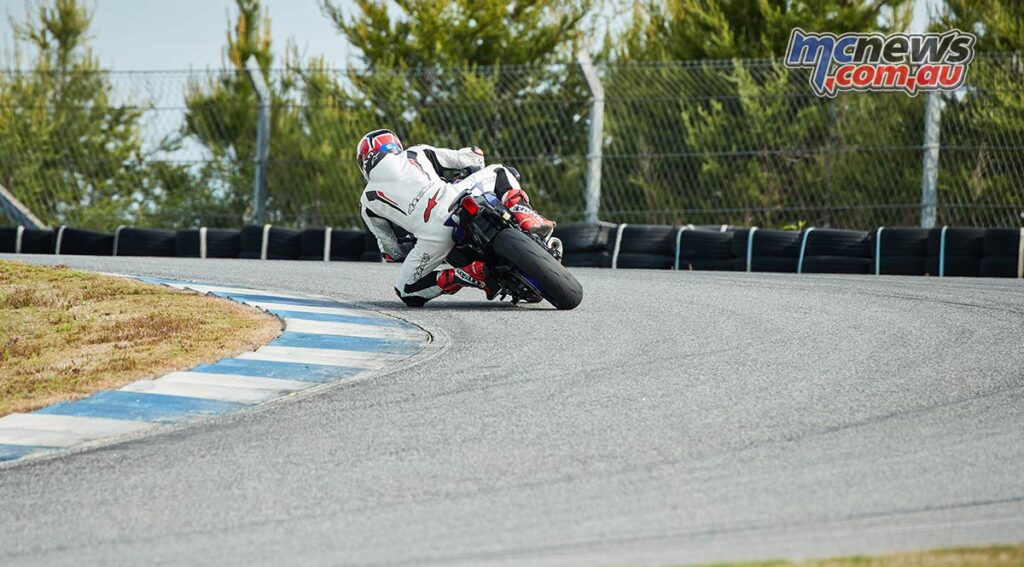
Helping matters here was our testbike was fitted with the brilliant Bridgestone Battlax Racing R11 tyres, which is the Japanese company’s ultra-stcky production race tyre. The R7 will not come with that rubber at the dealer, but never fear because you will get the more appropriate S22, a tyre I tested in Spain and was pretty blown away by the overall grip and longevity. On a side note, at the 2020 KTM 1290 Super Duke R launch at Portimao the S22’s were standard fitment on that bike, too, and the test-bikes did some 15 sessions in a row without a single front or rear change with a bunch of hack-handed journo’s riding—that was more impressive than when we rode them at the launch…
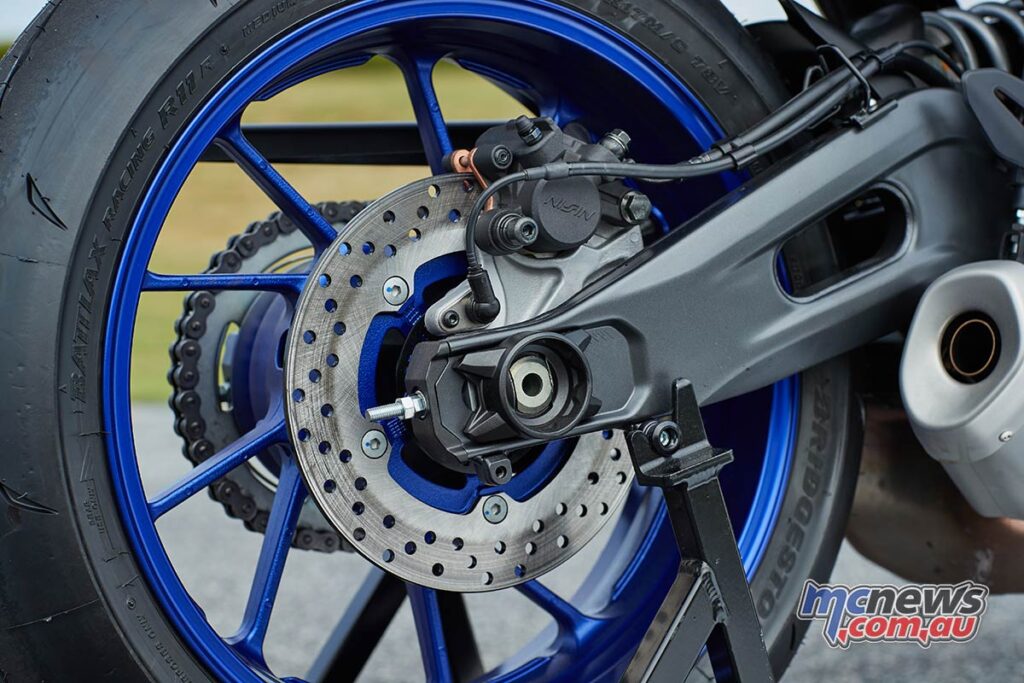
The R7’s arrival has really highlighted the need for Yamaha to build a bridge between it and the R1, as the performance gap is just too great. Me thinks a 120-ish horsepower YZF-R9 based off the MT-09 would be a rather tasty plate indeed, although I have no idea whether Yamaha is thinking the same thing.
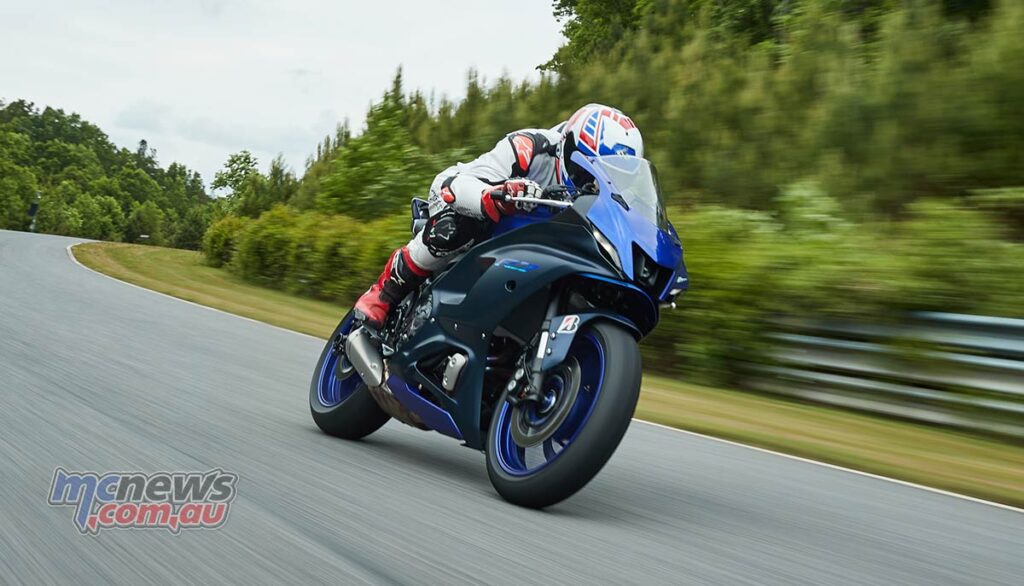
I’ll admit it’s hard not to compare the 2022 R7 to the original R7 or even the R6, because it’s human nature to compare. It gives us a ranking and helps us feel in control, but to categorise the new R7 as anything other than a new direction for Yamaha’s sportsbikes would be unfair.
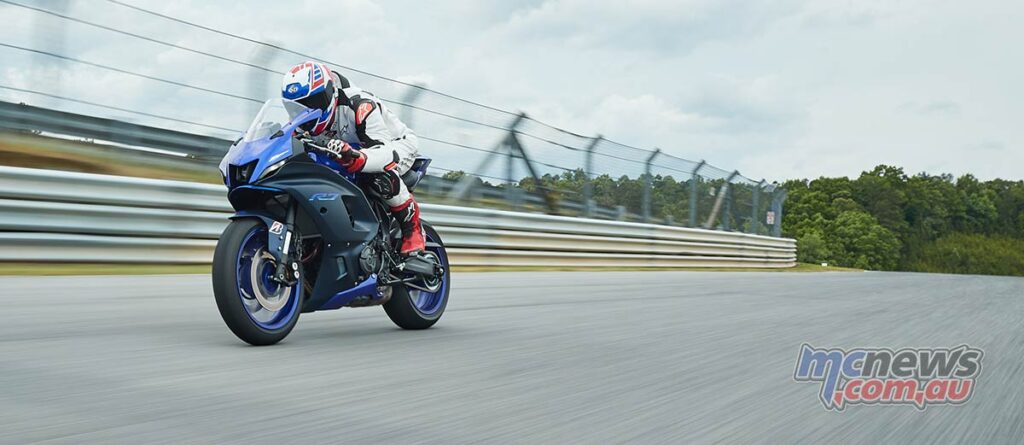
The R7 has its charms, has its drawbacks, but I’m pleased to see it come to production. It deserves to be here, and will hopefully serve as a platform to bring new riders back into the sportsbike fold, as Trev suggested in his piece on the R7. If they do that, in time Yamaha may have created a bigger legend than even the old OW-02 was.
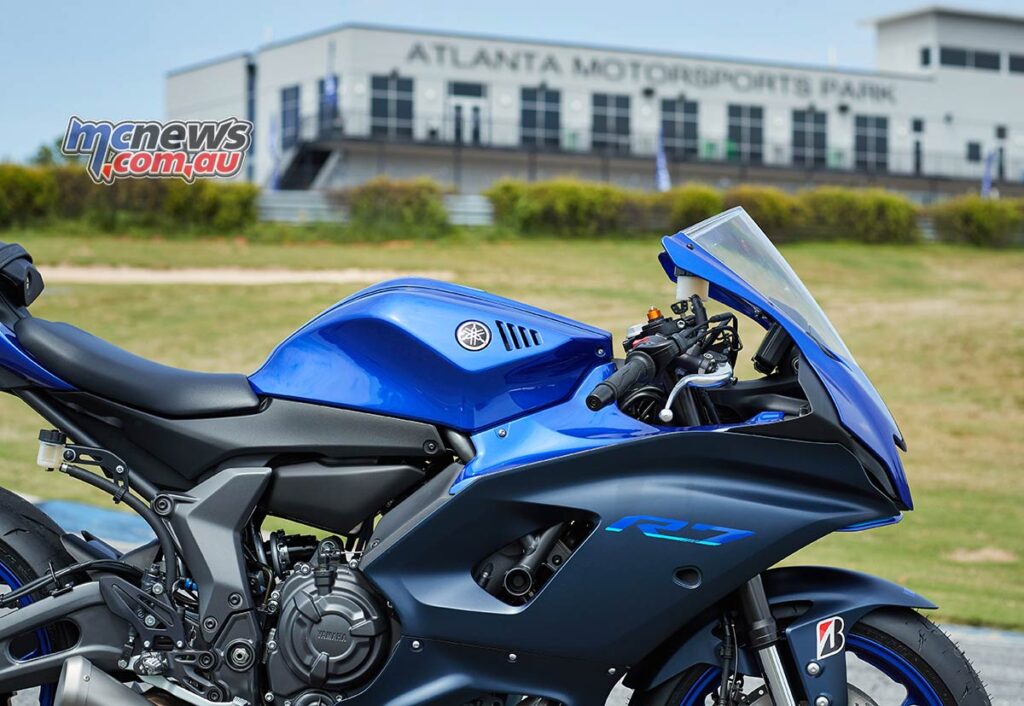
The new R7 is schedule to arrive in Australia this December and will be priced at $13,999 ride away for the LAMS variant while the full power version, as tested here, will retail for $14,999 ride away.
2022 Yamaha YZF-R7 Specifications
| 2022 Yamaha YZF-R7 Specifications | |
| Engine type | Liquid-cooled, 4-stroke, DOHC inline twin-cylinder; 4-valves per cylinder |
| Displacement | LA: 655cc / HO: 689cc |
| Bore x stroke | LA: 78.0 mm x 68.6 mm / HO: 80.0 mm x 68.6 mm |
| Compression ratio | 11.5 : 1 |
| Fuel delivery | Fuel Injection |
| Starter system | Electric |
| Transmission system | Constant mesh six-speed w/ A&S clutch |
| Final Transmission | Chain |
| Frame | High tensile steel Deltabox |
| Front suspension | KYB 41 mm USD forks, preload, rebound and compression adjustable; 130mm travel |
| Rear suspension | Linked monoshock, preload and rebound adjustable; 130mm travel |
| Front brake | Dual 298 mm rotors, radial four-piston calipers, Brembo radial master-cylinder |
| Rear brake | Single 245 mm rotor, Nissin caliper |
| Wheels | 10-spoke cast alloy wheels |
| Tyres | Bridgestone BATTLAX S22, 120/70-17, 180/55-17 |
| Overall length | 2070 mm |
| Overall width | 705 mm |
| Overall height | 1160 mm |
| Caster Angle | 23.7-degrees |
| Trail | 90 mm |
| Wheelbase | 1395 |
| Seat height | 835 mm |
| Min ground clearance | 135 mm |
| Wet weight | 188 kg |
| Fuel tank capacity | 12.8 L |
| Colour | Team Yamaha Blue, Performance Black |
| Warranty | 24 months |
| Lights & Dash | LED lighting, LCD dash |
| Price – YZF-R7 HO | $14,999 Ride-away |
| Price – YZF-R7 LA | $13,999 Ride-away (LAMS) |




















